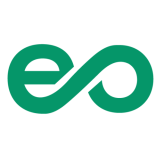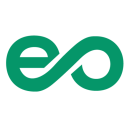In an era defined by rapid technological advancement, the concept of cheating has taken on new dimensions. The rise of Artificial Intelligence (AI) has transformed various sectors, including education. The accessibility of AI-powered learning tools and automated test-taking systems has challenged traditional definitions of cheating, prompting a need for a comprehensive re-evaluation of what constitutes academic dishonesty in this digital age.
The article “How do you define cheating in the age of AI?” published by TechCrunch, raises critical questions about the ethical boundaries in the use of AI in educational settings. As AI continues to permeate our lives, we are compelled to redefine cheating and adapt our ethical guidelines to account for these technological advancements.
AI-powered tools offer students a wealth of resources, from personalized study guides to automated essay-writing services. While these tools can enhance learning and improve accessibility, they also blur the line between assistance and dishonesty. For instance, if a student uses an AI-powered tool to write an essay, is it considered cheating? The answer is not clear-cut.
On one hand, using AI tools for learning purposes equips students with the necessary skills to navigate the digital world and encourages technological proficiency. On the other hand, relying excessively on these tools may stunt the development of critical thinking and problem-solving skills. The challenge lies in striking a balance between using AI as a learning aid and preserving the integrity of the learning process.
The use of AI in test-taking presents an even more complicated ethical issue. AI-powered tools can be used to predict test questions or even take tests on behalf of students. This not only undermines the purpose of assessment but also raises serious concerns about data privacy and security.
To define cheating in the age of AI, we must consider more than just the act itself. The intent behind the use of AI, the extent of its use, and the impact on learning outcomes should all factor into this definition. It is essential to develop a comprehensive set of guidelines that clearly outline acceptable and unacceptable uses of AI in education.
Educators, technologists, and policymakers must collaborate to create these guidelines, ensuring that they reflect the evolving nature of technology and learning. The goal should not be to prohibit the use of AI in education but to harness its potential in a way that enhances learning while preserving academic honesty.
In conclusion, the advent of AI has necessitated a redefinition of cheating. Striking a balance between leveraging AI’s benefits and maintaining the integrity of the educational process is the key to navigating this ethical grey zone. As we continue to integrate AI into education, we must ensure that it serves as a tool for empowerment, not a shortcut to success.
—

